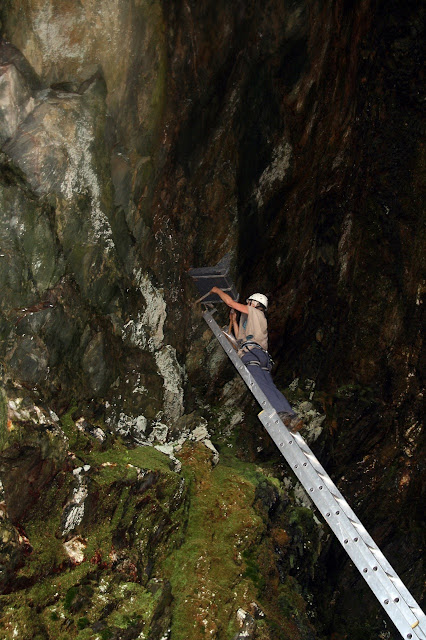Yesterday, returning from a BBQ on the Wirral with the family, I thought I'd have a quick look on the Severn near Caersws to see if it was as good for waders as the Wye at Glasbury was a few days ago. There weren't anywhere near as many Common Sandpipers around (and it was a bit windy for netting anyway) but I was more than satisfied at finding two broods of Little Ringed Plovers (one of four chicks and the other of three).
Effectively vanishing as soon as you start to rush over to find them, you need to be extremely careful not to tread on the well-concealed chicks
Seemingly delicate these little chicks can run like the clappers, hide pretty well and even swim when necessary. Hopefully some will make it 'til when they can fly as well.
I also managed to catch three of the adult birds (all done under the appropriate schedule 1 licence, obviously).
On the way out I checked one of our newly erected Little Owl boxes and was very pleased to find someone at home! Let's hope it stays in residence to rear a brood next year.
The new tenant with des res pictured in background
Even saw a juvenile Little Egret to complete the hat-trick but it wasn't hanging around to get darvic'd!



































